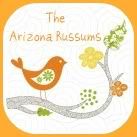One thing that I have gained a better understanding of by reading the study Bible is the geography of the New Testemant. During the OT, the Hebrews conquered the Promised Land and established what came to be known as Israel. During the times of David and Solomon, Israel expanded to its greatest area of land, but due to Solomon's sin at the end of his reign, the country eventually divided into two kingdoms, the North and the South. The North Kingdom was soon conquered by the Assyrians and its people were exiled. Centuries later, the South Kingdom, which was made up of the tribes of Judah and Benjamin and revolved around the capital of Jerusalem, was also conquered, but by the Babylonians. I have lots of previous posts about this. The OT leaves off with the Israelites, who were permitted to return to the area of Jerusalem once again, attempting to rebuild their diminished, underpopulated teritory, still under the control of the Persian Empire. While the temple was rebuilt, the OT leaves off with a feeling of sorrow and axieity, a longing for the Savior of the Jews to arrive.
By the time Jesus does arrive on earth, some crazy things have gone on in history and geography. The area of Israel is now ruled by the Roman Empire. Israel never did return to its former state nor was it able to occupy much of its former land. Instead, the area of Judea is its own little territory of sorts. Imagine it as one county or region in the midst of a huge country or continent ruled by Rome. Judea stems from Judah - and this is the area surrounding Jerusalem. Above Judea is Samaria, and this is the territory where the Samaritians are from - those people who were separated from and disliked by the Jews. When Jesus is kind to the Samaritian woman, it's surprsing to the disciples because Jews don't associate with the Samaritans (John 4). The well-known parable of The Good Samaritan is surprising, because it was a Samaritian that was willing to stop and help the hurt Jew, instead of the other Jews who passed the man by (Luke 10). These were not normal practices in this society. The Samaritans were of mostly mixed Jewish decent. They were Jewish peoples who had married interracially or interculturally after the exile, so they were looked down upon by those who had distinctly Jewish ancestry (think Pureblood and mudblood HP fans...). The Samaritans also worshiped Yaweh, but they did not go to Jerusalem to worship. Their culture and their religion were both mixed entities and the Jews did not like that.
However, to get from Jerusalem up to the region of Galilee (the territory surrounding the Sea of Galilee) by the most direct route, one would have to pass through Samaria. And of course, the region of Galilee was where our Savior grew up and where he spent most of his ministry years. The common places frequently named in the Gospels, the Sea of Galilee, Capernaum, Nazareth, Bethsaida, were all in this region of Galilee. And, if you can imagine, compared to the urban center of Jerusalem, Galilee was in the boonies. Certain cities such as Capernaum, where Jesus performed many miracles, were more developed than others, but tiny towns such as Nazareth, where Mary and Joseph were from, were basically "the sticks." Tiny, poor population of uneducated people. And this is where Jesus was from, which is why Phillip asked "Can anything good come out of Nazareth?" (John 1:46).
Understanding these regions has given me a whole new view of Jesus during his ministry. I can see why the Jews were so anxious for poltical Savior to free them from the grasp of Roman authorities and to restore their land to them. It was probably frustrating to live in small regions, mixed with pagan cultures, when your people used to have their own powerful country. However, Jesus came to "seek and save the lost" (Luke 19:10) - which is far better than poltical restoration, but something so many Jews could not understand.
And now... my first attempt to add photos to the Bible blog...
The Kingdom of Israel during the time of David and Solomon:
The first one shows the region right after the Jews returned from exile; the second one is what the area looked like during Jesus' ministry:





No comments:
Post a Comment